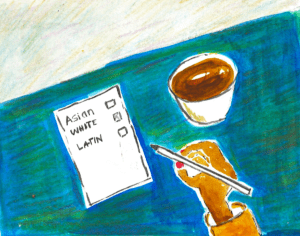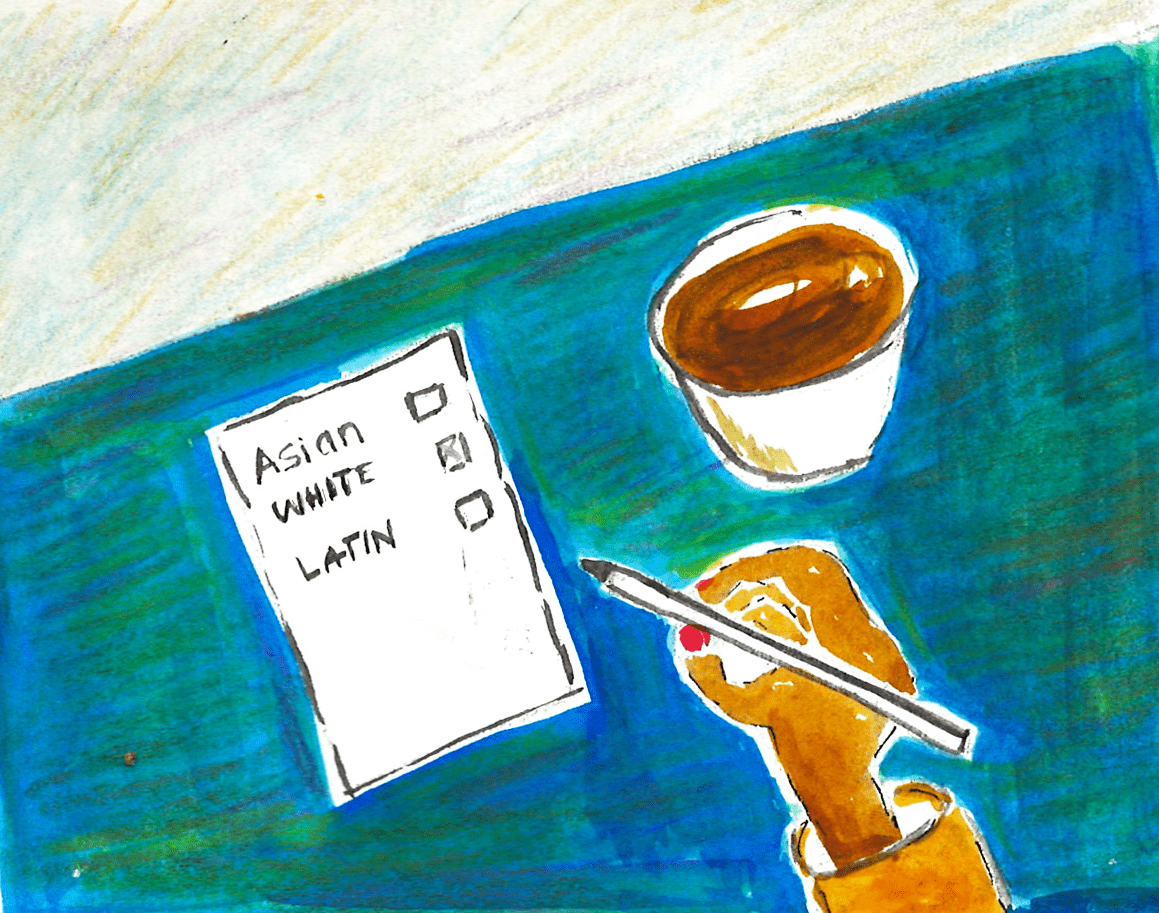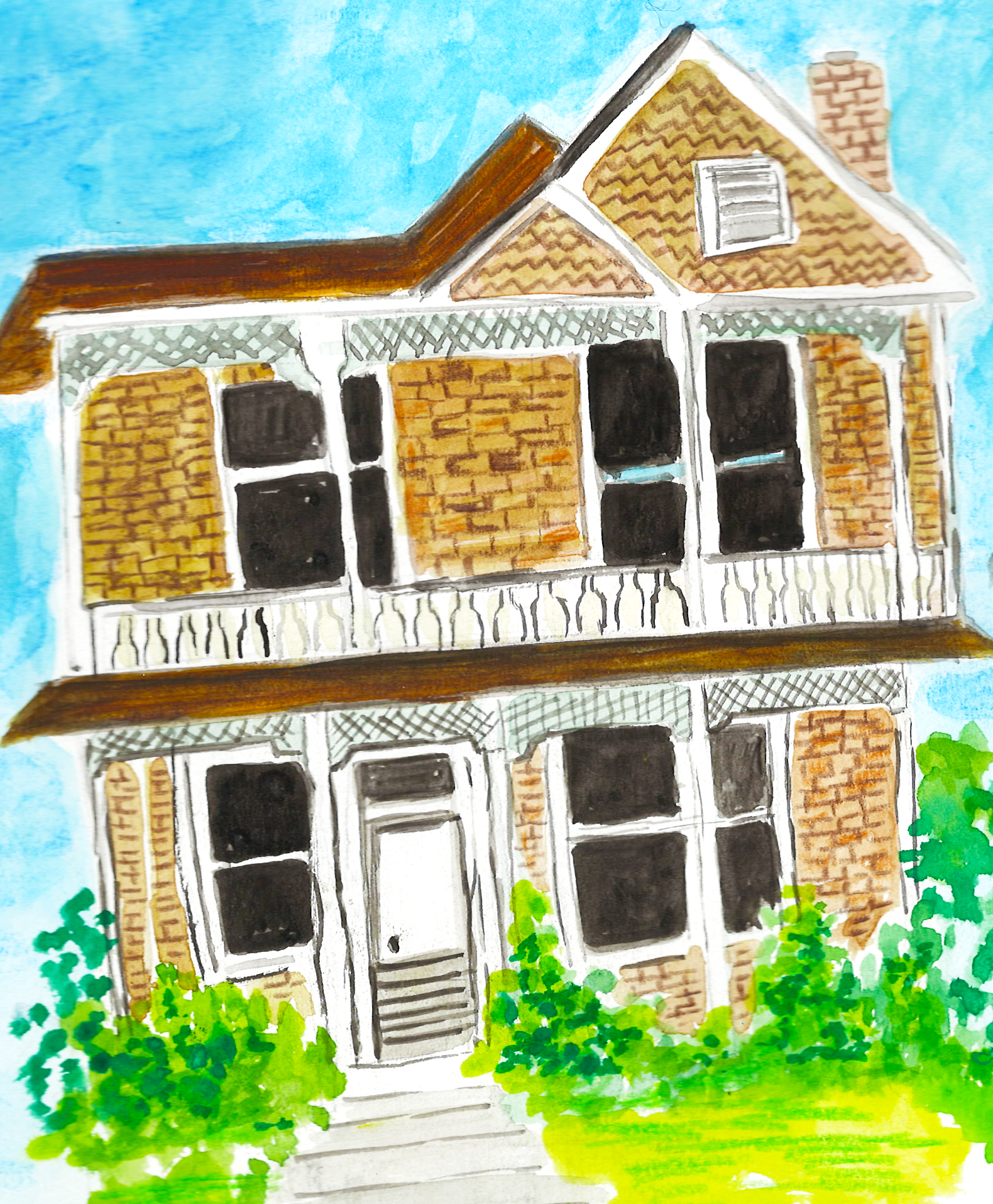
10. The “Spanish” people are the citizens of Spain. “Mexicans” are the citizens of Mexico. When you refer to people of Spanish-speaking heritage in general, the preferred term is “Hispanic.” (“Latino” is also used in some parts of the USA, but less often in Texas.) Do not use “white” as the opposite of “Hispanic.”
I come upon this numbered point on a list of writing rules, looking for whether or not Latina must be capitalized. Do not use white as the opposite of Hispanic. I am struck by the line because I don’t know what to make of myself after reading it. I am Hispanic and definitively Latina of non-Spanish origin but I often check the “White” box on paperwork and applications with separate places for ethnicity and race. Once I check “Hispanic/Latino” in the ethnicity section, I’m left with either “White” or “Other” in the race column. Am I Other? I choose White for convenience, or comfort, or because my skin is light enough for that.
White frequently feels like the opposite of Hispanic and Latina to me. Hispanic, as in speaking Spanish instead of English. Latina, as in everything else about me, my parents working full time from when I was a baby to pay off the house, my always-tan skin. White, as in how to act in classes, job interviews, and when ordering in restaurants. White as in saying my name is Julie at Starbucks because Anahi is too hard.
I learned English in preschool out of necessity and by the time I was eight years old my English was as clear as my peers, much more so than my father’s accented version. My voice now is perfect white-voice. Over the phone and even while speaking to someone in person there’s a dissonance between my name, my physical body, and how I sound. So rule number ten was right all along: white isn’t opposite even when it feels like it is because it’s in me, rubbing up against everything that’s Other. It’s not opposite because it’s an innate mode of control, becoming my speaking voice, my mannerisms, my frame of reference for my body and self for my entire young life.
In elementary school, my first best friend, Annie, lives in an eccentric two-story house on Sunset. The walls are painted all kinds of colors or made of strange materials: shiplap in the TV room, a blood orange foyer. The furniture is all antique and oddly shaped, the kitchen old but quaint. Everything feels nice even when it isn’t, because Annie’s family has taste. Annie’s home is like everyone’s home from school, though it’s not much like mine.
A later best friend, Kaitlyn, has a house more like mine: single-story, on the edge of the school district. We live in the liminal spaces, the houses that aren’t big but are still nice, the houses that we don’t invite people to once we grow into some shame. Kaitlyn has a small closet her parents have converted into a reading nook, and in it we draw with her colored pencils. We draw pictures of girls at sleepovers in big beds and castle-sized houses. We draw girls with everything in the world, sort of like us but also unlike us at all.
At school, I learn to accept the mispronunciation of my name, even by close friends, as a formality. I also learn to pretend as though it isn’t an indication of my race and hope that it is seen as a technicality by the Hannahs and Annas and Johns and Nathans of my class. I keep to myself the resentment I have for my special, different name.
My sister and I quickly learn the ways whiteness works for us, and while our parents decidedly assimilated, we do so out of necessity and convenience. Our Christmas lists are full of things our friends from school already have, not because we can’t afford them but because we don’t want to ask for them until the time is right. We wear the same graphic tees and Bermuda shorts that everyone else wears. We watch the same TV shows, read the same books, have the same objects as our friends—publicly. Privately we eat giso, empanadas, we speak Spanish to our father. These are the rules of our lives and we abide by them enthusiastically, precisely.
Each day I desperately cling to whiteness. I cling to it in conversations, when a friend mispronounces a Spanish word and glances at me. I cling to whiteness in literature classes, attempting to speak to no experience in particular, making general remarks that fit with both a white version of and another part of myself. I cling to it when someone asks me where Paraguay is. Whiteness is a way to forget that I am what I am, who I am.
My friends from high school and college alike are all white, upper-middle class women, and it’s difficult to re-situate myself in this world as something other. My internal experience is not white, but it is upper-middle class, and I feel as though I am socially white rather than physically. And that’s comforting, isn’t it? To know that I’m accepted as someone wholly other than who I am?
At once I do and do not understand marginalization. I understand what it means to marginalize myself—to accept slips of the tongue, microaggressions which don’t in any way feel micro, to forcibly remove my heritage from conversations to make them easier. I removed it from my entire life, too, for years on end, in order to comfortably exist. To make transitions through my life not only seamless, but invisible.
At my cousin’s wedding in the spring of 2018, I watch two people dance. They swing their bodies, their limbs expertly twisting and bending to the tune of “La Vida es un Carnaval.” I don’t know this couple, since they’re guests of the bride and my cousin is the groom, but I can’t help stare at them. Where did they learn to dance like this?
We are in Brownsville, a city that sits just twenty minutes from the border into Mexico, my mother’s hometown. Here—both the wedding and this city—I can’t help but consider how Mexican I am or am not. I look at my skin, the same color as most everyone at the wedding, lighter than some, darker than others. It’s olive, or tan, or pale brown, or at least that’s how it’s been described to me. My mother is darker than me, though only in the undertones of her skin; she is less yellow, more purple or red. Tia Gloria is a deep brown, all purple, and her son (the groom) is the same. The dancers are my mother’s color, too. I feel ambiguously gringa, but my hair and eyes are brown, my skin clearly not white.
This is my mother’s home and the feelings that come with it now. I don’t know what it means to wonder how Mexican I am, but I consider it anyway, looking at myself in the mirror, eavesdropping on conversations in Spanish just to see if I can keep up. My body is a proxy for whatever I feel like. Brownness, whiteness, or nothing at all. When I look at my family, I know what I’m not: I am not white. I realize it for the first time at the wedding, twenty years old. It hits me like a train, or really, like something slower, something that has been a long time coming.
Here, I want my skin to be brown, but I can’t commit, can’t speak or dance or drink like my extended family. It feels like performing something I’m not, and I go in circles about whether or not that’s true, or whether my performative whiteness is the false thing, the thing unlike my true self. I don’t have to perform any whiteness here, and yet I must, because it’s in me even if it’s not my race or ethnicity or whatever box there might be to check.
One moment white, the next Latina, the next neither. In those moments of neither, I tow the line between Anahis—the Anahi I have created, the white Anahi, and the other Anahi, who learned Spanish before English, who could dance if she ever bothered to learn, who is every part her parents, her family, and no part the people around her. Thinking myself into this spiral is a game without prizes, and it’s endless, and I continue to play it throughout the wedding and into the rest of 2018. I’m playing it now, writing about this circle of Latina-ness.
***
Rumpus original art by Sumayya Ansari.







